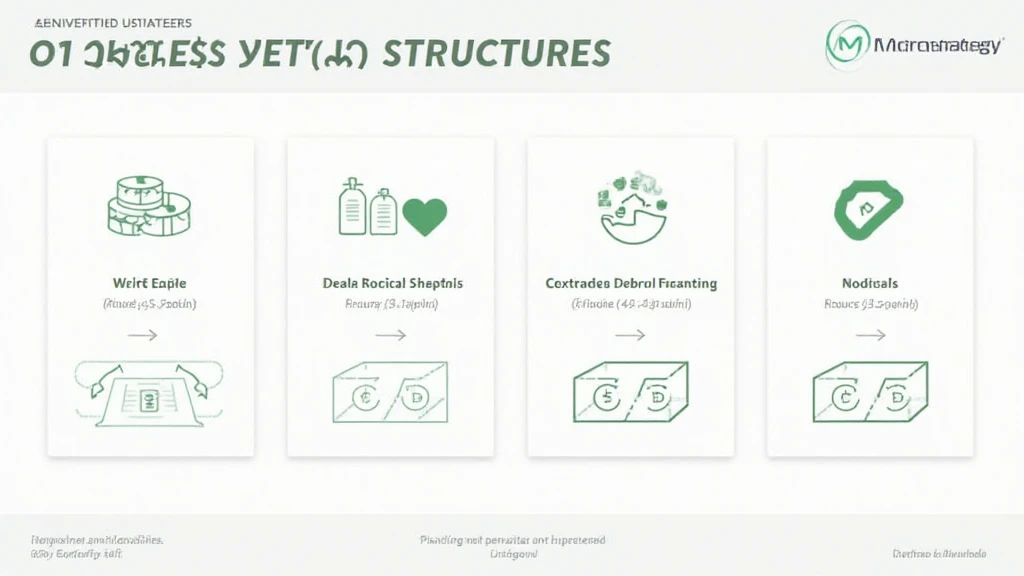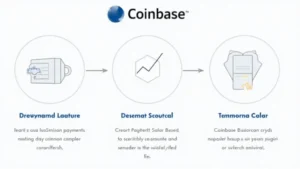Introduction
In the rapidly evolving world of cryptocurrencies and blockchain technology, companies are continuously exploring innovative ways to structure their capital. A prominent example is MicroStrategy, a business intelligence company that has garnered attention for its aggressive Bitcoin acquisition strategy. As of the latest reports in 2023, MicroStrategy has accumulated over 140,000 bitcoins, making it one of the largest corporate holders of Bitcoin globally. With increasing scrutiny on cryptocurrency investments and the complexities surrounding blockchain security, it’s crucial to understand the intricacies of MicroStrategy’s Bitcoin capital structure and its implications for institutional investing.
Understanding Bitcoin Capital Structure
When we talk about a company’s capital structure concerning Bitcoin, we refer to how the organization finances its bitcoin purchases—balancing debt, equity, and cash reserves. MicroStrategy’s approach can be broken down into several essential components:
- Equity Financing: MicroStrategy funded a significant portion of its bitcoin purchases through equity offerings. The capital raised allows the company to take larger positions in Bitcoin without relying solely on cash reserves.
- Debt Financing: In addition to equity, MicroStrategy has issued convertible senior notes, which provide an innovative way to raise capital while also limiting immediate dilution of equity. This method gives investors exposure without the obligation to convert into stock, allowing the company to retain more ownership of its bitcoin assets.
- Cash Reserves: MicroStrategy uses its cash reserves strategically to supplement its bitcoin acquisition efforts, ensuring that liquidity is maintained while capitalizing on market opportunities.
These components work together to create a robust capital structure, allowing MicroStrategy to effectively navigate the volatile nature of the cryptocurrency market.

The Importance of Bitcoin in MicroStrategy’s Strategy
MicroStrategy’s decision to adopt Bitcoin as a primary treasury reserve asset has been pivotal in reshaping its overall business strategy, often compared to traditional corporations holding gold. MicroStrategy positions its Bitcoin holdings as a hedge against inflation and currency devaluation—a notion that resonates strongly in current economic climates.
According to a recent report by Chainalysis, the Bitcoin market is projected to grow significantly over the next few years, with institutional investors playing a pivotal role in this trajectory. This growth presents a unique opportunity for companies like MicroStrategy, emphasizing the importance of a well-structured Bitcoin strategy that aligns with overall financial goals.
MicroStrategy’s Vietnam Market Insights
As MicroStrategy continues to expand its Bitcoin holdings, it’s noteworthy to examine its positioning in emerging markets such as Vietnam. With a notable growth rate in cryptocurrency adoption in Vietnam, fueled by increased internet penetration and improved accessibility to blockchain technologies, businesses must consider localized strategies.
As of 2023, Vietnam witnessed a rising number of crypto users, contributing to a vibrant community seeking opportunities in digital currencies. This trend illustrates the potential for MicroStrategy to engage with Vietnamese investors, addressing their unique needs and compliance requirements when it comes to Bitcoin investments.
Evaluating the Risks and Opportunities
Like any investment strategy, MicroStrategy’s approach to Bitcoin is not without risks. The volatility of Bitcoin prices introduces uncertainties that can impact the company’s financial health if not managed effectively. Here are some of the primary considerations:
- Market Volatility: The exponential price fluctuations of Bitcoin can lead to substantial gains or losses, reminiscent of the 2021 bull run followed by significant corrections.
- Regulatory Scrutiny: As cryptocurrencies face evolving regulations, companies must continuously adapt to maintain compliance and protect their assets. For instance, the Vietnamese government has outlined new regulations for digital assets that could affect institutional investment strategies.
- Technological Risks: The security of Bitcoin holdings relies heavily on robust technological frameworks. Companies must prioritize cybersecurity measures to prevent potential hacks, as evidenced by the $4.1 billion lost to hacks in the DeFi sector in 2024.
Despite these risks, MicroStrategy’s bitcoin strategy positions the company favorably for future growth opportunities, especially as demand for digital assets continues to rise.
Conclusion
In summary, MicroStrategy’s Bitcoin capital structure reflects an innovative strategy that combines equity financing, debt instruments, and strategic cash reserves. As the landscape of digital assets evolves, studying companies like MicroStrategy can provide valuable insights into effective capital management and risk mitigation in cryptocurrency investments.
Furthermore, as the Vietnamese market develops, it’s essential for companies to adapt their strategies to align with local regulations and opportunities. By understanding and responding to the context of emerging markets, businesses can better position themselves for success in the digital economy.
For those looking to delve deeper into the complex world of digital assets, platforms like bitcoincashblender offer resources and insights tailored for cryptocurrency investors. As the market continues to grow and evolve, staying informed is crucial to navigating the challenges and seizing the opportunities that lie ahead.
Author: Dr. Nguyen Tran, an expert in blockchain technology with over 20 published papers in the field and experience leading audits for top-tier cryptocurrency projects.











